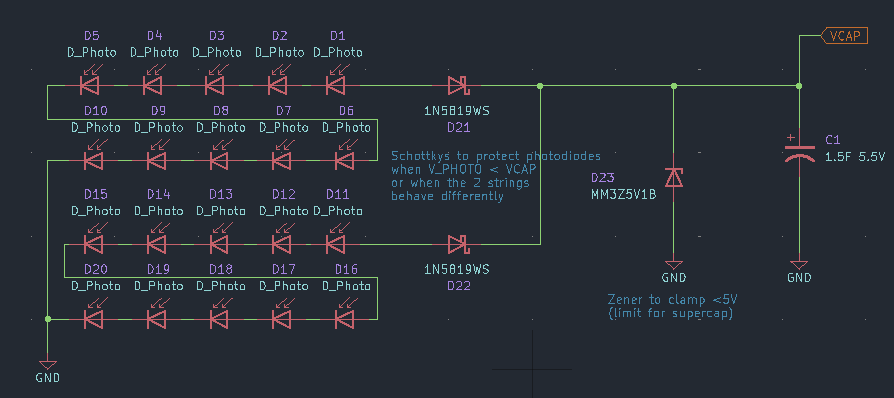I suspected that the supercaps I am using were draining fast, and that connecting the photodiodes to them was actually draining the caps when they were not charging them.

The supercapacitors are charged using photodiodes in a 2s10p configuration, each string protected by a Schottky diode. See schematic.

I knew from extrapolating the datasheet that the Schottky diodes would not drop a lot of voltage at tiny currents (a few dozens uA max), and I confirmed this with measurements. But I was not clear whether when Vcap > Vphotodiodes, the reverse Schottky diodes would leak come current the other way, therefore discharging the supercaps, and undoing what the solar charge was doing!
The graph confirms this: regardless of the supercap used, when the photodiodes are connected, they deplete much faster then when the photodiodes are disconnecting (~200mV/day v. <100mV/day, see the blue and green lines). Yes, the discharge is not linear but empirically the difference is noticeable regardless. The graph also confirms that the slightly bigger caps are much better when it comes to self discharge! Compare the blue and orange lines: ~100mV/day v. ~40mV/day (that includes the Zener diode too).
 atelierlelu
atelierlelu
Discussions
Become a Hackaday.io Member
Create an account to leave a comment. Already have an account? Log In.